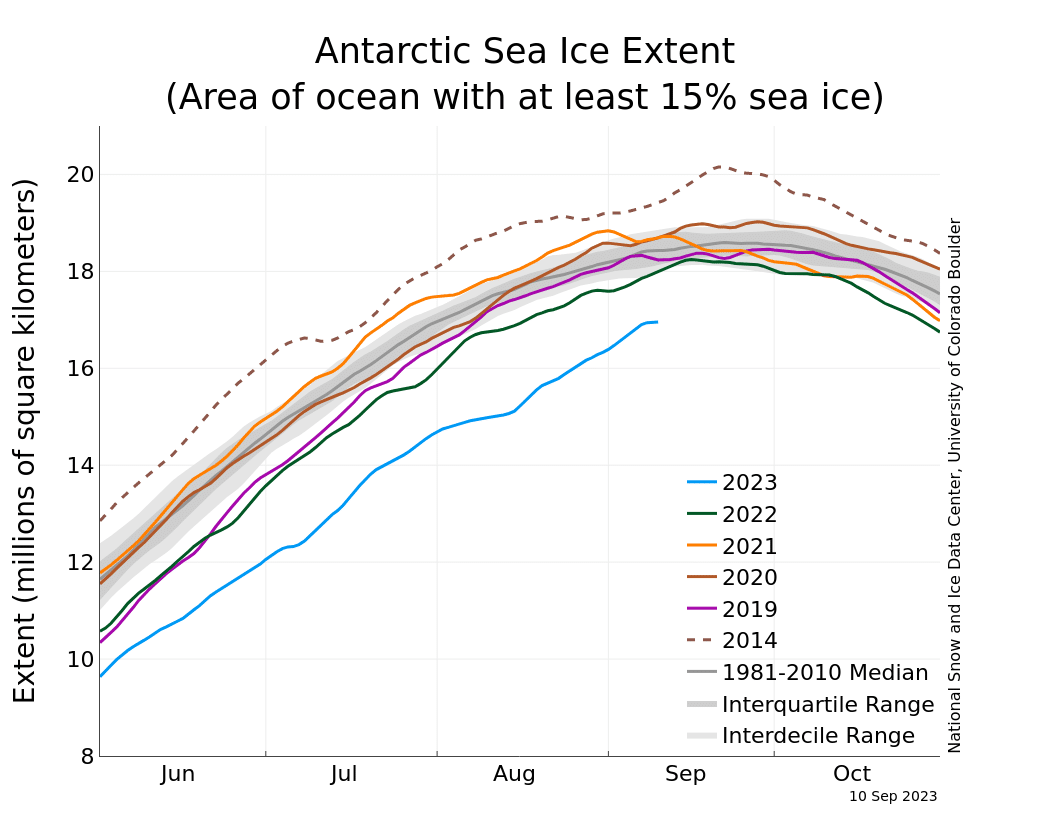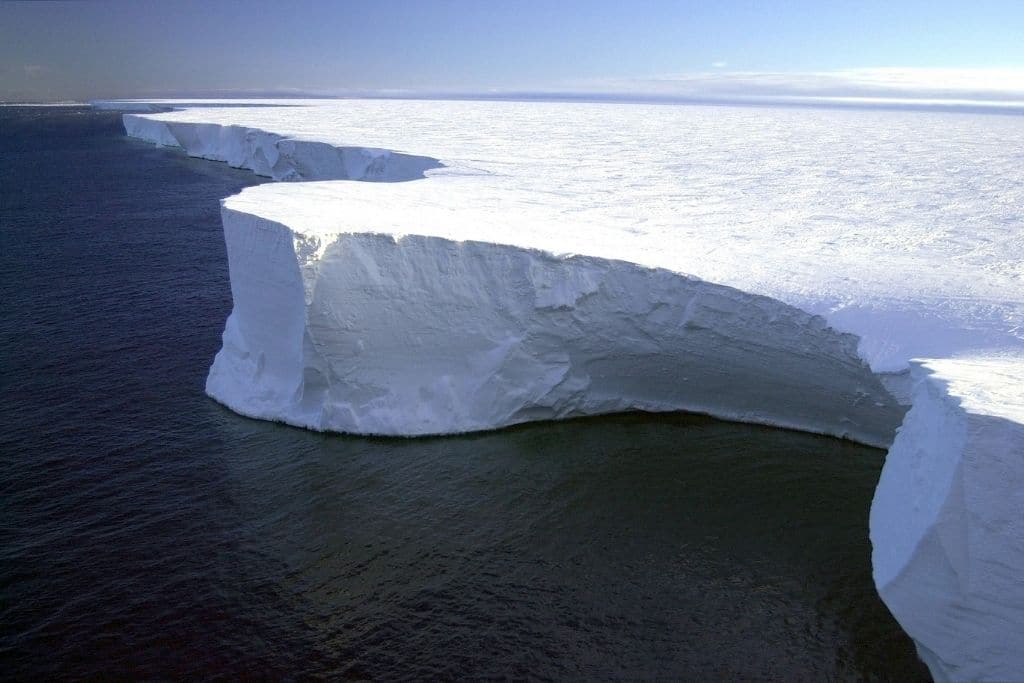The new measurement, which surpasses the previous record low maximum extent of Antarctic sea ice cover set in 1986, could be the start of a “long-term trend of decline,” the National Snow and Ice Data Center in the US said.
—
Antarctic sea ice cover has reached its lowest maximum extent since record began in 1979, new analysis has found.
In an announcement published on Monday, the US National Snow & Ice Data Center (NSIDC) said that on September 10, Antarctic sea ice likely reached its maximum cover of 16.96 million square kilometres (6.55 million sq mi), approximately 13 days earlier than the 1981-2010 median date.
The measurement is more than one million square kilometres (approximately 398,000 sq mi) below the previous record low set in 1986 and 1.75 million square kilometres (676,000 sq mi) below the 1981-2010 average maximum extent.

Antarctic sea ice extent as of September 10, 2023 (blue), along with daily ice extent data for four previous years and the record maximum year. Image: National Snow and Ice Data Center.
“There is some concern that this may be the beginning of a long-term trend of decline for Antarctic sea ice, since oceans are warming globally, and warm water mixing in the Southern Ocean polar layer could continue,” the NSIDC’s announcement – a preliminary version that will be updated in early October – reads.
You might also like: The Consequences of Rising Sea Surface Temperatures on Wildlife and Coastal Communities
“The last three or four months now is nothing like we’ve seen before, or would have expected, ever,” Cecilia Bitz, a climate scientist specialising in sea ice at the University of Washington, told Bloomberg. “This tells me that the climate change we’re seeing is outside our range of experience and can’t be explained by natural variability.”
The NSIDC’s findings follow a multitude of concerning updates on the state of Antarctica’s ice in recent months.
In February, scientists published the results of a two-month expedition to West Antarctica’s Thwaites Glacier – nicknamed the “Doomsday Glacier” because of the catastrophic impact of its potential collapse on sea levels. They found that the glacier is melting rapidly and in unexpected ways, warning that its collapse represents more than half a metre (about 1.6 feet) of global sea level rise potential. They also did not exclude the possibility that its disappearance could destabilise neighbouring glaciers, leading to a further three-metre (9.8-foot) rise.
Antarctica Is Headed for a Climate Tipping Point
A study published in September 2022 found that exceeding 1.5C of global warming could trigger multiple climate tipping points, including Amazon dieback, thawing permafrost, and the collapse of the West Antarctic ice sheet (WAIS).
The UN’s World Meteorological Organisation (WMO) reported that temperatures in Antarctica have increased by almost 3C over the past 50 years, with glaciers experiencing an accelerated retreat. Because the Antarctic ice sheet contains 58 metres (190 feet) of sea level rise equivalent over several centuries, scientists are growing worried about its recent behaviour.
Its mass losses of ice between 1992 and 2011 accounted for 4mm of sea level rise and almost 18% of the total global sea level rise in the period 2012-2017, a study found. By the end of the current century, the melting of the Antarctic ice sheets could contribute up to one metre (3.3 feet) to sea level rise.
And with an additional heating of at least 0.4C now virtually unavoidable, a paper published in August concluded that the continent will experience more pronounced extreme weather events in the years to come, with scientists saying they “cannot rule out future cascades where extreme events may have wide-ranging linked impacts in multiple realms.”
Indeed, besides sea levels, melting glaciers in the Antarctic region could result in significant biodiversity loss, as thousands of animal species are dependent of the ice pack.
New research found that climate change-triggered melting of sea ice in Antarctica is taking a heavy toll on emperor penguins, suggesting it could wipe out entire populations by as early as 2100. Classified as one of Antarctica’s most vulnerable species, emperor penguins require sea ice attached to solid land between April and January to breed. This makes them extremely vulnerable to rapid sea ice loss in the region, which reached record levels in the spring season of 2022.
You might also like: Changing Deep Ocean Currents Due to Antarctic Melting Could Have Disastrous Impact on Climate: Report


















